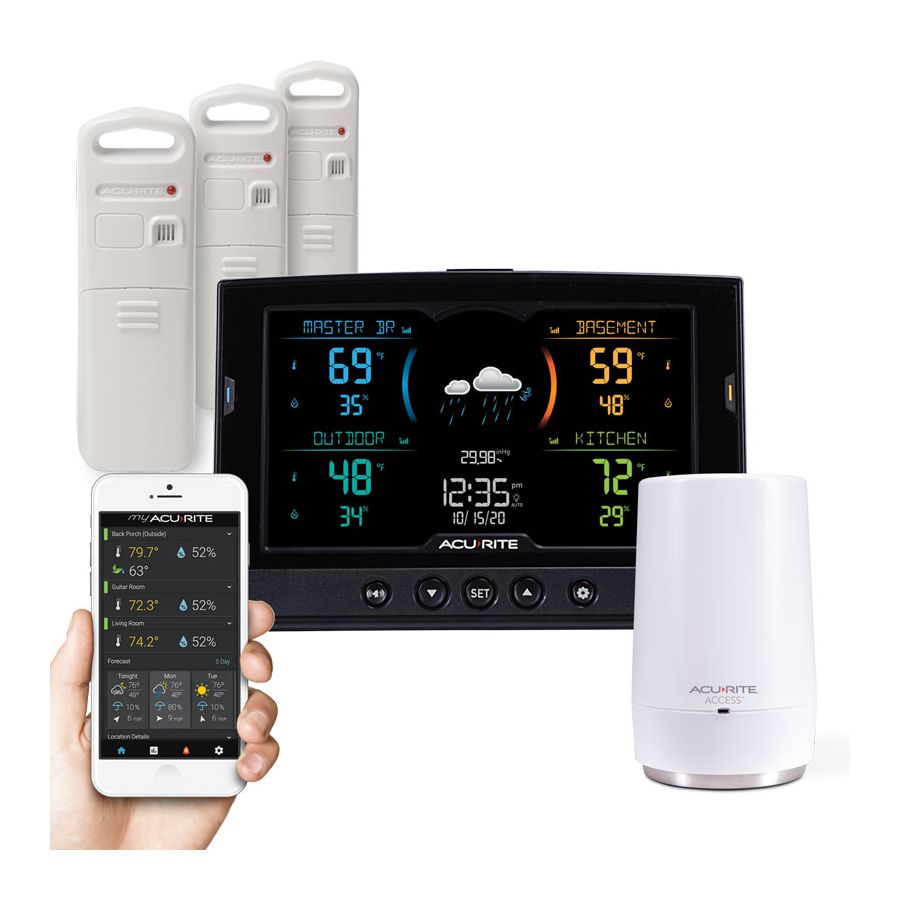Is the Weather Causing Your Headache?
Have you noticed that you're more likely to get a headache — or worse, a migraine — in certain kinds of weather? Are you one of those people who can feel the weather in your bones? If so, you're not alone. A recent study conducted by researchers at the University of Manchester found that 75% of people with long-term pain conditions experience more pain during certain types of weather. Not surprisingly, one of the weather factors cited by the study was lower barometric pressure.
There's a well-established link between barometric pressure, headaches, and other chronic pain conditions, such as arthritis. Here's what science knows — and doesn't know — about the relationship between weather and pain.
The Relationship Between Barometric Pressure and Headaches
In an article published by the Cleveland Clinic — cleverly titled Is There a Migraine in Your Forecast? — headache specialist Dr. Jennifer Kriegler noted that many patients report weather changes, such as a fall in barometric pressure or a rise in temperature, seem to trigger headaches.
Dr. Cynthia Armand, of Montefiore Medical Center in New York, agrees and explains that our sinuses are essentially pockets of air in our head. Usually, the air pressure in our sinuses is the same as the atmospheric pressure, also called barometric pressure. When the atmospheric pressure changes, a shift occurs between what you're experiencing in your head and what is going on in the air. That shift could be the reason that many people experience increased headaches and migraines when barometric pressure drops — and since our joints are surrounded by similar pockets, it could also explain why a change in the weather also seems to make arthritis pain worse.Does the Weather Affect Your Migraines?
It's worth noting that the actual research about how — or even whether — the weather affects migraines and other types of pain is inconclusive. While some studies appear to support it, others have found no correlation or an insignificant one. In one of our recent blog posts, AcuRite customer Lt. Jamie Meece shared his story about pain management and why researchers have a difficult time definitively establishing a connection between weather and chronic pain. He also noted that other weather factors seemed to affect his pain levels.
Does the weather affect your pain levels? One way to find out is to keep a "pain diary" — there's even an app specifically for that. Note how you feel each day for a month or two, then compare that data with the daily weather reports to see if there's a correlation. AcuRite home sensors and weather stations can help you track the conditions in your home and microenvironment for even better data correlation.
How Tracking Barometric Pressure (and Other Weather Data) Can Help You Manage Migraines
If it turns out that weather does affect your pain and other symptoms, you might find it useful to track weather data for your immediate environment with AcuRite products with pressure sensors. Our sensors make it easy to collect data on barometric pressure as well as temperature, humidity, and other factors that might affect your health. When you know the conditions in your home, you can take preventive measures, such as using a rescue medicine or avoiding other pain and migraine triggers. If you've kept a pain diary, you can even share it with your medical provider and ask their advice on preventive treatment and pain management.
Seasonal Guide to Managing Your Pain
What can you do if you know that certain types of weather make a migraine or other pain more likely for you? The Cleveland Clinic and the American Migraine Foundation shared a collection of tips to help you manage chronic pain that's related to weather and seasonal changes.
- Avoid other triggers, such as wine, chocolate, and aged cheeses, when the weather is bad.
- Stay hydrated. Even mild dehydration can increase the amount of pain you feel.
- Get a good night's sleep.
- Keep rescue medicines handy.
- Increase magnesium intake.
- Use physical activity to help manage stress — exercise is a great stress buster.
Spring
Spring and autumn are prime migraine seasons because of the frequent rapid changes in temperature, humidity, and barometric pressure. If you suffer from spring allergies, stay on top of your treatment to avoid worsening migraines or triggering sinus headaches.
Summer
High humidity and summer thunderstorms can trigger migraines in some people. Keep track of the humidity levels in your home and invest in a good dehumidifier to keep them in comfortable ranges.
Autumn
Like spring, fall is a time of rapid temperature and barometric pressure changes. Being aware of the changes in weather can help you take preventive measures recommended by your health provider. In addition, shortening days can disrupt your sleep schedule. Try to keep your sleep schedule consistent to avoid sleep deprivation.
Winter
Dry indoor air and the barometric pressure changes associated with snowstorms can also trigger migraine symptoms. Stay hydrated and consider using a humidifier to help avoid dehydration.
There are many reasons to monitor and track environmental and weather data, from simple curiosity to managing a business. We can't think of a better use, though, than using the data you collect to help you and your household stay healthy and safe.
Does the weather affect how you feel? Share your stories below!
References:
https://americanmigrainefoundation.org/resource-library/seasonal-migraine-triggers/
https://health.clevelandclinic.org/do-you-get-a-migraine-headache-when-it-rains/
https://www.nature.com/articles/s41746-019-0180-3
https://www.cloudywithachanceofpain.com/








